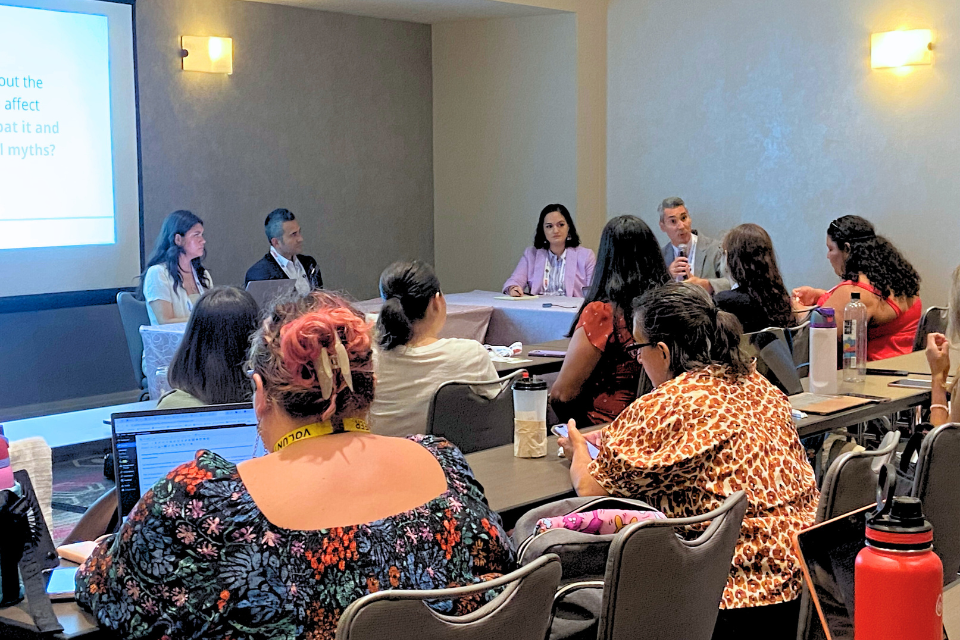The Latinx community is one of the most diverse in the United States. The American cultural melting pot has always included those who are of Mexican, Puerto Rican, Cuban, Central American, and South American descent. Unfortunately, these communities do not always have access to the mental health care that they deserve. It is time to learn more about how these barriers can be broken so that all communities have the same access to mental health assistance.
There is no race or ethnicity that will find themselves immune from mental health issues. They significantly affect all walks of life, at all times. The statistics that have been compiled about the sheer number of Latinx community members who are currently suffering from mental illness are sobering. Over 18% of the US population is estimated to be Latinx or Hispanic. Of this population, 16% have reported having mental illnesses within the past year.
These numbers may seem small. But they number about the same as the population of New York City. Fortunately, there are ways to overcome these barriers but there are certain factors that need to be discussed before that can happen.
In Connecticut, 65.8% (164,000) of adults with mild mental illness, 48.3% (75,000) of adults with moderate mental illness, and 34.6% (37,000) of adults with serious mental illness in the past year did not receive mental health treatment, according to a study by the Kaiser Family Foundation.

Language Barriers
While there certainly are barriers that exist when it comes to mental health resources in the Latinx community, the language barriers are not discussed nearly enough. It’s easier to talk about societal stigmas because the need for mental healthcare isn’t a concept that everyone can understand. Meanwhile, many people who need help aren’t getting it because they cannot access bilingual medical personnel.
Obviously, mental health treatments, including substance abuse treatment, require communication between the patient and practitioner. If they can’t speak the same language, it’s next to impossible for the patient to get the help they need. Sometimes, the prospective patient is totally unaware that they can speak through an interpreter, which creates another barrier to care.
Challenge Family Stigma
Familial bonds play a key role when seeking mental health treatment. Latinx and Hispanic patients traditionally have strong family networks. That’s why it is important for these family members to help alleviate the stigma that surrounds mental health. If you come from a family that considers therapy a sign of weakness, for example, you’ll be less likely to seek help when you need it. There are also societal stigmas that surround mental health therapy that have to be eliminated before Latinx and Hispanic patients can seek treatment.
In many cases, friends and family members may believe in the power of prayer when they are advising a family member who is struggling with a mental health disorder. Religious institutions can fight back against these stigmas by encouraging their parishioners to seek out the necessary assistance in addition to religious traditions when it comes time to schedule treatment. Older family members can also help by removing the concept of shame from the equation. These are the types of protective factors that can cause more problems than they solve, from a mental health standpoint.
Desire To Handle The Problem On One’s Own
Studies have been conducted regarding the perceived barriers among first and second-generation Latinx people and one of the more common reasons that came to the forefront was a desire to handle the problem on one’s own. There is a great deal of uncertainty in other regards, which also contributes to this idea. This was actually the single most common barrier, accounting for over 60% of the respondents who were studied.
When a potential patient perceives that they do not have a need for professional assistance, they are also more likely to drop out when they have begun to receive treatment. The treatments are often perceived as ineffective, causing 39% of respondents to stop going once they have begun a course of mental health treatment. Of all Latinx people, women and younger patients who have mental health disorders were the most likely to recognize their need for treatment.
Logistical Difficulties
For patients who are willing to seek treatment and recognize its potential effectiveness, the primary barrier can be the logistics. Whether it’s a lack of transportation, inability to schedule an appointment, a lack of child care or a rigid school or work schedule, there are a number of legitimate reasons for Latinx patients to struggle with obtaining treatment. In other words, the current healthcare systems cannot be strictly relied upon without the same disparities continuing to show themselves.
In these instances, the Latinx population could be correct when it comes to their anticipation of substandard or unattainable care. While recent advances have been made as far as these discrepancies are concerned, the gaps between need and treatment still exist. Even after adjusting for various other factors, all minority groups with a 12-month depressive disorder were more likely to seek any mental health care. It is safe to say that many of these potential patients have correctly perceived various logistical difficulties.
Fear of Involuntary Hospitalization
While many strides have been made as far as the strategies for mental health care delivery are concerned, there is still a major fear of involuntary hospitalization among Latinx and Hispanic patients. Rules and regulations can differ greatly from location to location, causing many to remain fearful, even as advances take place. Yes, there has been a shift from hospital-based care to community-based care, but that does not mean that these fears have been alleviated completely.
Concerns of Poor Treatment Due To Ethnic Background
As mental health patients and the psychologists who are responsible for their treatment attempt to find common ground, there is one major issue that continues to arise. Each side of the equation speaks a different language. This is a natural side effect of more immigration to the United States, especially among populations that are less proficient English speakers.
Inadequate communication takes place because of these particular barriers, which only serves to fuel concerns of poor treatment due to ethnic background. Mental health professionals must learn Spanish as a means of minimizing this disparity. At the moment, 64% of United States patients who are limited English speakers are fluent in Spanish. As more psychologists learn Spanish, this is a form of medical intervention.
Sources
Mhanational.org – Latinx/Hispanic Communities And Mental Health
Ncbi.nlm.nih.gov – Barriers to and Correlates of Retention in Behavioral Health Treatment among Latinos
Journalofethics.ama-assn.org – Should All U.S. Physicians Speak Spanish?
Mentalhealth.org – For Friends and Family Members
Photo by Nik Shuliahin on Unsplash

Andrea Poteet-Bell is a journalist and editor. Her writing has appeared in local daily newspapers, alternative weeklies, and websites across the country. She graduated from the University of Michigan-Dearborn with a degree in print journalism and lives in Michigan with her husband and their dog, Charlie Brown.
Do you have an idea for a Opinion-Editorial article? We want to hear from you! Send us your ideas at info@latinonewsnetwork.com




